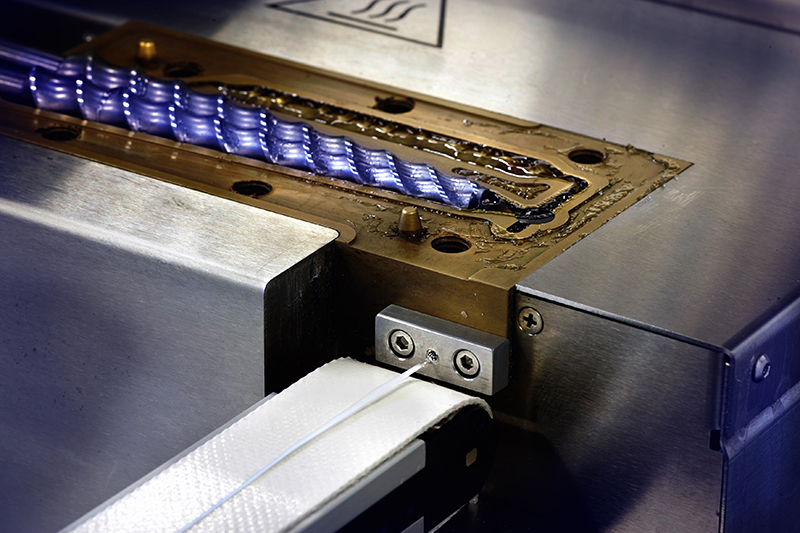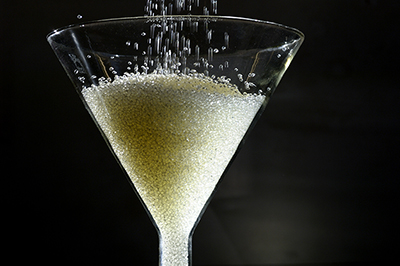> SupraMolecular Polymers
The essential ingredient of our technology platform is the use of supramolecular interactions (‚Äėinteractions beyond the molecule‚Äô) to increase the virtual molecular weight of polymers. This is achieved with our proprietary SupraB hydrogen bonding approach. Functionalization of polymers with these SupraB hydrogen bonding units leads to very strong interactions between the (short) polymer chains, thereby increasing their apparent molecular weight and consequently improving their material properties. However, due to the sensitivity of hydrogen bonding to temperature and concentration, heating or dilution will lead to a dramatic drop in binding strength. As a result, the (cross-linking) interactions between the
polymers weaken and the apparent molecular weight of the polymers is much lower resulting in a low viscous, tractable material, resulting in the following clear advantages:
- polymer processing becomes possible at lower temperatures or higher speed
- functional polymeric materials can be switched on/off using external triggers like heat
- bonding takes place without the need for a chemical reactive formulation
- specific rheological profiless leading to unique dynamical properties like self-healing behavior

> Self-healing polymers
Self-healing polymeric materials are beginning to reach the market in which the use of reversible non-covalent interactions is a recurring design principle. SupraPolix uses its SupraB-approach to take this design principle to its extreme. The resulting supramolecular polymers, where hydrogen bonds are responsible for the interactions between the polymer chains, form materials that self-heal after a shot heating cycle, or even more particular, can repair themselves after damage by just
reassembling the broken polymeric parts together. In both cases, the proprietary hydrogen bonding system takes care of the autonomous healing without the need for the inclusion of chemicals, catalysts, or plasticizers. Furthermore, the self-healing cycle can be repeated over and over again as no material is consumed. Therefore, these materials are eminently suitable for their use in self healing applications, ranging from adhesives, coatings, and elastomeric materials.

> Selected technical papers for further reading
Supramolecular Materials
Composte Science and Technology: Toughening and healing of continuous fibre reinforced composites by supramolecular polymers. link to pdf
Macromolecular Chemistry and Physics: Self-Healing Supramolecular Polymers In Action. link to pdf
Nature: Materials Science: Supramolecular Polymers. link to pdf
Materials Today: Supramolecular Polymers at work. link to pdf
Supramolecular Biomedical Polymers
Biomaterials: Early in-situ cellularization of a supramolecular vascular graft is modified by synthetic stromal cell-derived factor-1őĪ derived peptides. link to pdf
Acta Biomateriala: Hydrolytic and oxidative degradation of electrospun supramolecular biomaterials: In vitro degradation pathways. link to pdf
Advanced Materials: Hierarchical Formation of Supramolecular Transient Networks in Water: A Modular Injectable Delivery System. link to pdf


